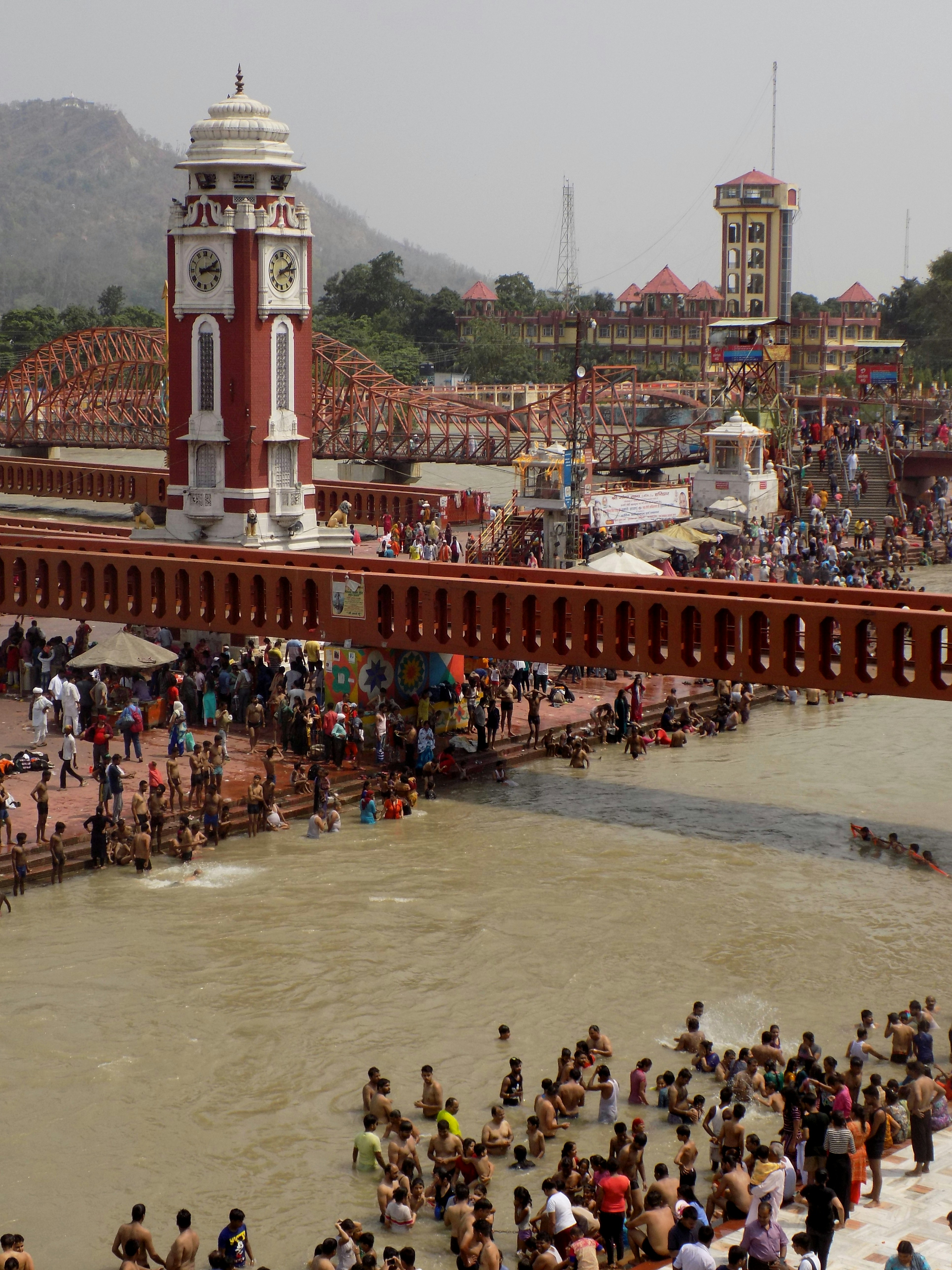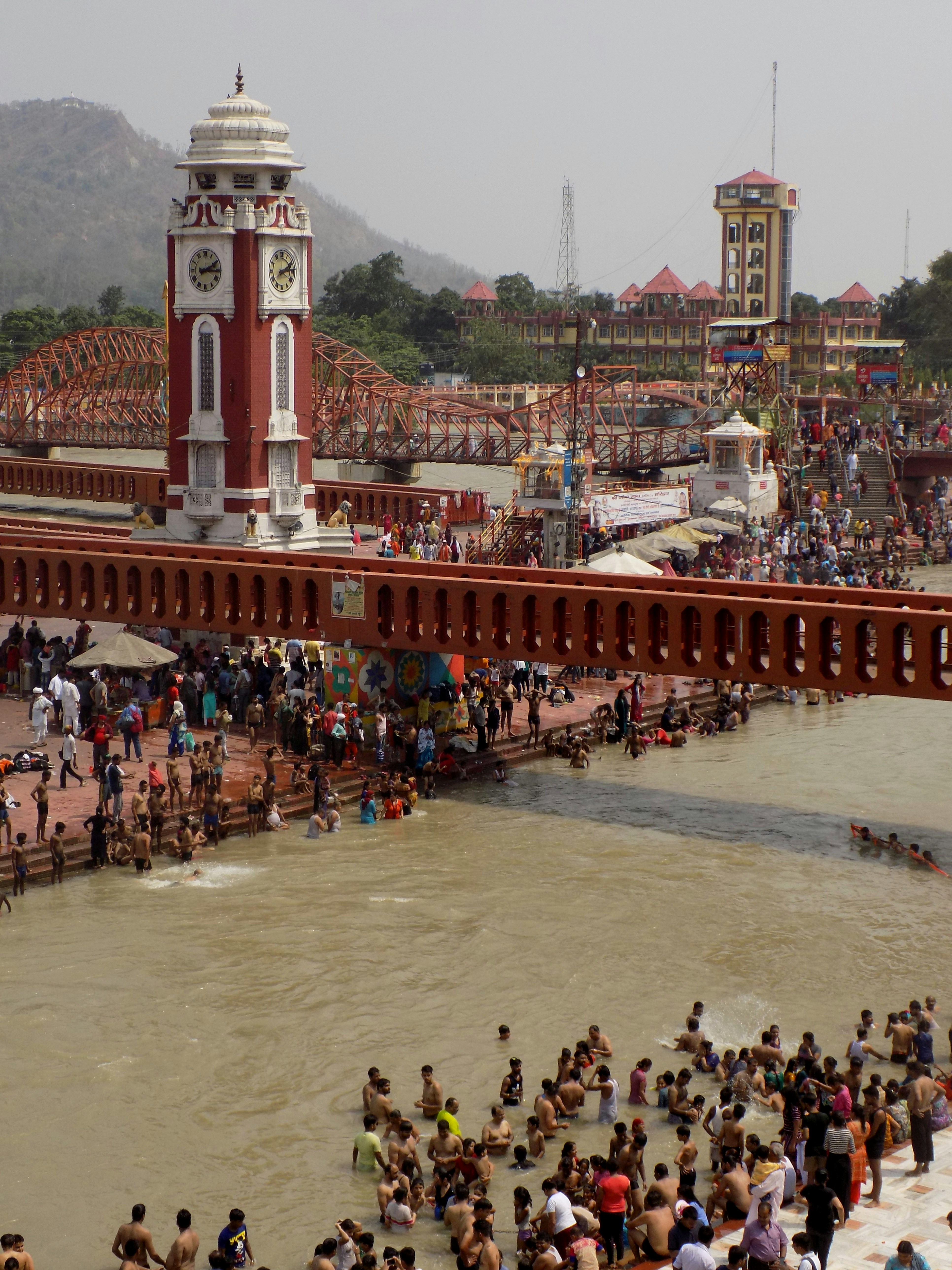Introduction
Welcome to Haridwar, the spiritual city of Uttarakhand! Known for its rich cultural heritage and ancient temples, Haridwar is a place where spirituality and devotion blend seamlessly. In this blog post, we will explore some of the most prominent temples in Haridwar and delve into the religious significance they hold for both locals and visitors.
Haridwar, situated on the banks of the sacred River Ganges, is considered one of the holiest cities in India. It is believed that taking a dip in the holy waters of the Ganges here can cleanse one’s sins and lead to spiritual liberation. This belief attracts millions of pilgrims and tourists from all corners of the world every year.
The city is home to numerous temples, each with its own unique history and significance. One of the most famous temples in Haridwar is the Har Ki Pauri, which translates to “Steps of Lord Shiva.” It is believed that Lord Vishnu left his footprint on a stone here, making it a sacred spot for Hindus. Pilgrims gather at Har Ki Pauri to take part in the evening Ganga Aarti, a mesmerizing ritual where lamps are lit and offered to the river as a form of worship.
Another prominent temple in Haridwar is Mansa Devi Temple, perched on top of Bilwa Parvat. Dedicated to Goddess Mansa Devi, the temple is believed to fulfill the wishes of devotees who tie a sacred thread on the branches of a tree within the temple premises. The temple can be reached by a cable car, offering breathtaking views of the city and the surrounding hills.
Chandi Devi Temple is another significant shrine in Haridwar, situated atop the Neel Parvat. It is believed that Goddess Chandi fulfills the wishes of her devotees, and the temple attracts a large number of pilgrims throughout the year. Visitors can reach the temple by trekking up the hill or taking a cable car ride.
Haridwar is also home to the Daksha Mahadev Temple, dedicated to Lord Shiva. This temple holds immense historical and mythological significance. According to legends, this is the place where Lord Shiva’s father-in-law, Daksha, performed a yagna (sacred ritual) and where his daughter, Sati, self-immolated in protest. The temple stands as a symbol of devotion and the power of divine love.
These are just a few of the many temples that make Haridwar a revered destination for spiritual seekers. Each temple has its own unique stories and rituals, offering visitors a glimpse into the rich cultural and religious traditions of the region. Whether you are a devotee seeking spiritual solace or a traveler interested in exploring the cultural heritage of India, Haridwar is a place that will leave you enchanted and inspired.
The Chandi Devi Temple is not only a place of religious significance but also a testament to the architectural marvels of ancient India. The temple is adorned with intricate carvings and sculptures that depict scenes from Hindu mythology, adding to its allure. The sanctum sanctorum of the temple houses the idol of Goddess Chandi, beautifully adorned with vibrant clothes and ornaments. Devotees offer prayers and perform rituals, believing that their wishes will be fulfilled by the benevolent Goddess. The temple premises are well-maintained and provide a serene atmosphere for meditation and introspection. The lush green surroundings and the gentle breeze from the nearby hills create a soothing ambiance that is conducive to spiritual practices. Many visitors spend hours in quiet contemplation, seeking solace and inner peace in the divine presence of Goddess Chandi. Apart from its religious significance, the Chandi Devi Temple also attracts adventure enthusiasts and nature lovers. The trek to the temple is a thrilling experience, with the path winding through dense forests and rocky terrain. As one ascends the Neel Parvat, the panoramic views of the Haridwar city and the Ganges river unfold, leaving visitors awe-struck by the beauty of nature. For those who prefer a more convenient mode of transport, the cable car ride is an excellent option. The cable car takes visitors from the base of the hill to the temple, providing a bird’s-eye view of the surrounding landscape. The ride itself is an adventure, offering a unique perspective of the temple and its surroundings. Visiting the Chandi Devi Temple is not just a religious pilgrimage but also an opportunity to immerse oneself in the rich cultural heritage of India. The temple is a symbol of devotion, faith, and spirituality, and it continues to attract millions of devotees and tourists from around the world. Whether one seeks spiritual enlightenment, seeks blessings, or simply wishes to witness the majestic beauty of the temple, a visit to the Chandi Devi Temple is an experience that will leave a lasting impression.
The Mansa Devi Temple is not only a place of religious significance, but it also holds historical and cultural importance. Built in the 19th century by the royal family of the erstwhile State of Nabha, the temple showcases exquisite architecture and intricate carvings that reflect the rich heritage of the region.
As visitors enter the temple premises, they are greeted by a serene and peaceful atmosphere. The air is filled with the fragrance of incense and the sound of devotional chants. The temple complex is adorned with beautiful gardens and fountains, creating a tranquil environment for devotees to connect with the divine.
Inside the temple, the main deity, Goddess Mansa Devi, is adorned with vibrant clothes and adorned with precious jewels. Devotees offer flowers, fruits, and sweets as a symbol of their devotion. The temple priests perform elaborate rituals and ceremonies to appease the goddess and seek her blessings.
One of the highlights of visiting the Mansa Devi Temple is the cable car ride that takes visitors to the hilltop. The cable car offers breathtaking views of the surrounding hills, the Ganges River, and the city of Haridwar. It is a thrilling experience that adds to the overall spiritual journey.
Devotees believe that by visiting the Mansa Devi Temple and offering prayers, their wishes will be granted. The temple is particularly popular among couples seeking blessings for a happy married life and women seeking fertility and childbirth blessings. Many devotees also tie threads or ribbons on the sacred tree near the temple, believing that their wishes will be fulfilled when the threads are untied.
Aside from its religious significance, the Mansa Devi Temple is also a center for cultural activities. Festivals such as Navratri and Diwali are celebrated with great enthusiasm and fervor. The temple premises come alive with music, dance, and vibrant processions, showcasing the rich cultural heritage of the region.
In conclusion, the Mansa Devi Temple in Haridwar is not just a place of worship, but a spiritual haven that offers solace and fulfillment to its devotees. With its historical and cultural significance, breathtaking views, and the belief in wish fulfillment, it continues to attract thousands of visitors from all walks of life.
The Har Ki Pauri is not only a holy place but also a significant historical landmark. It is believed that this ghat was built by King Vikramaditya in the 1st century BC to commemorate the visit of Lord Vishnu. The ghat has undergone several renovations over the centuries, but its spiritual significance remains unchanged. The Har Ki Pauri is not just a religious destination; it is also a cultural hub. The ghat is surrounded by bustling markets and vibrant temples, creating a vibrant atmosphere that reflects the essence of Haridwar. Visitors can explore the nearby bazaars, filled with shops selling religious artifacts, colorful clothes, and traditional handicrafts. The aroma of incense and the sound of devotional songs fill the air, creating a sensory experience like no other. Apart from its religious and cultural significance, the Har Ki Pauri is also a place of historical importance. It is said that during the Mughal era, Emperor Akbar visited Haridwar and was so impressed by the ghat that he ordered the construction of a mosque nearby, known as the Moti Masjid. This mosque stands as a testament to the harmonious coexistence of different religious communities in Haridwar. The Har Ki Pauri is not just a place for religious rituals; it is also a place for introspection and self-reflection. Many visitors come here seeking solace and spiritual guidance. The serene ambiance and the gentle flow of the Ganges create a tranquil environment that encourages contemplation and inner peace. In recent years, the Har Ki Pauri has gained international recognition and has become a popular tourist destination. People from all over the world visit this ghat to witness the Ganga Aarti and experience the spiritual energy that radiates from this place. The enchanting sight of hundreds of lamps floating on the river, accompanied by the rhythmic chants of the priests, leaves a lasting impression on the hearts and minds of those who witness it. Overall, the Har Ki Pauri is not just a physical location; it is a symbol of faith, devotion, and cultural heritage. It is a place where the past meets the present, where spirituality merges with history, and where people from all walks of life come together in search of something greater than themselves. A visit to the Har Ki Pauri is not just a journey; it is a transformative experience that leaves an indelible mark on the soul.
Other Temples in Haridwar
Aside from the Chandi Devi Temple, Mansa Devi Temple, and Har Ki Pauri, there are several other temples in Haridwar that are worth exploring.
The Maya Devi Temple, dedicated to Goddess Maya, is one of the oldest temples in Haridwar and holds great historical and religious significance. The temple is believed to be the place where the heart and naval of Goddess Sati fell. It is said that the temple was built in the 11th century and has undergone several renovations over the years. The architecture of the temple reflects a blend of North Indian and South Indian styles, making it a unique sight to behold. Inside the temple, devotees can find a black stone idol of the goddess, adorned with flowers and offerings.
The Bharat Mata Mandir is a unique temple dedicated to Mother India. It showcases a map of India carved in marble and is a symbol of national unity and patriotism. The temple was inaugurated in 1983 by the then Prime Minister, Indira Gandhi. The seven-storey temple represents different deities, freedom fighters, and mythological figures from Indian history. Each floor is dedicated to a specific theme, such as the freedom struggle, religious harmony, and cultural heritage. From the top floor, visitors can enjoy panoramic views of the city and the surrounding landscape.
The Daksha Mahadev Temple is another important temple in Haridwar. It is believed to be the place where Lord Shiva’s father-in-law, Daksha Prajapati, performed a yagna (sacrificial ritual) and where the famous incident of Sati’s self-immolation took place. The temple is situated on the banks of the river Ganges and is surrounded by lush greenery, creating a serene and peaceful atmosphere. Devotees visit the temple to seek blessings from Lord Shiva and to witness the grandeur of the annual Shivratri festival, which is celebrated with great enthusiasm and devotion.
Enter your email to get the Latest Updated Exploring News and Topics
Discover more from atozexplore.com
Subscribe to get the latest posts sent to your email.







